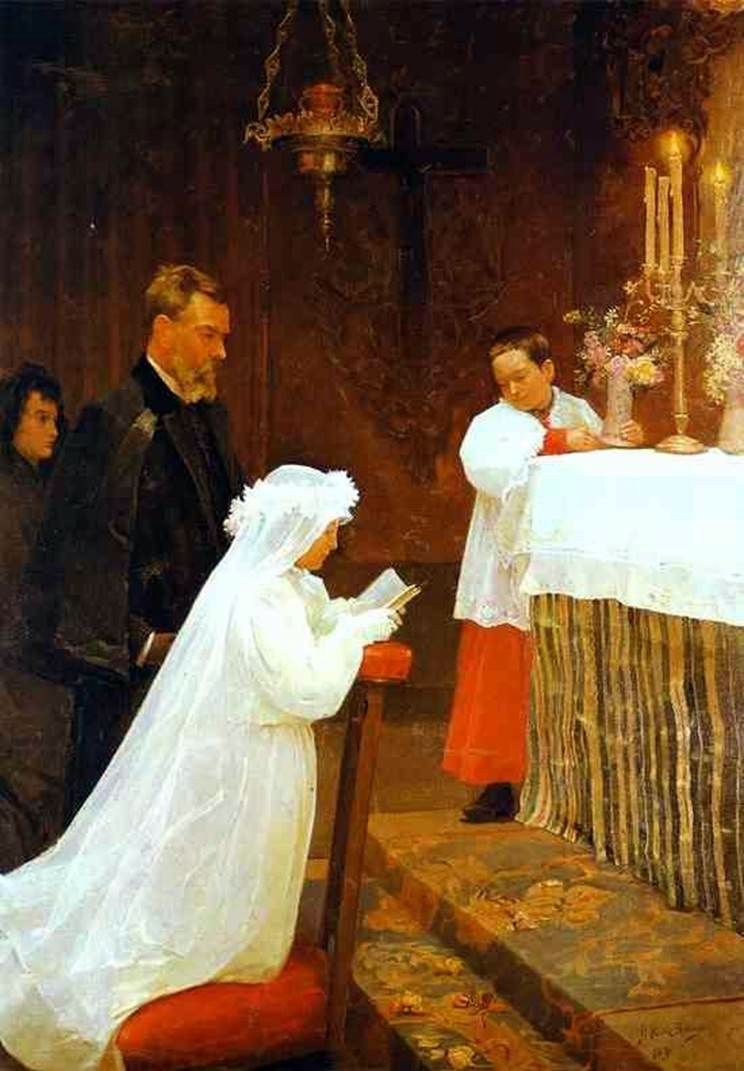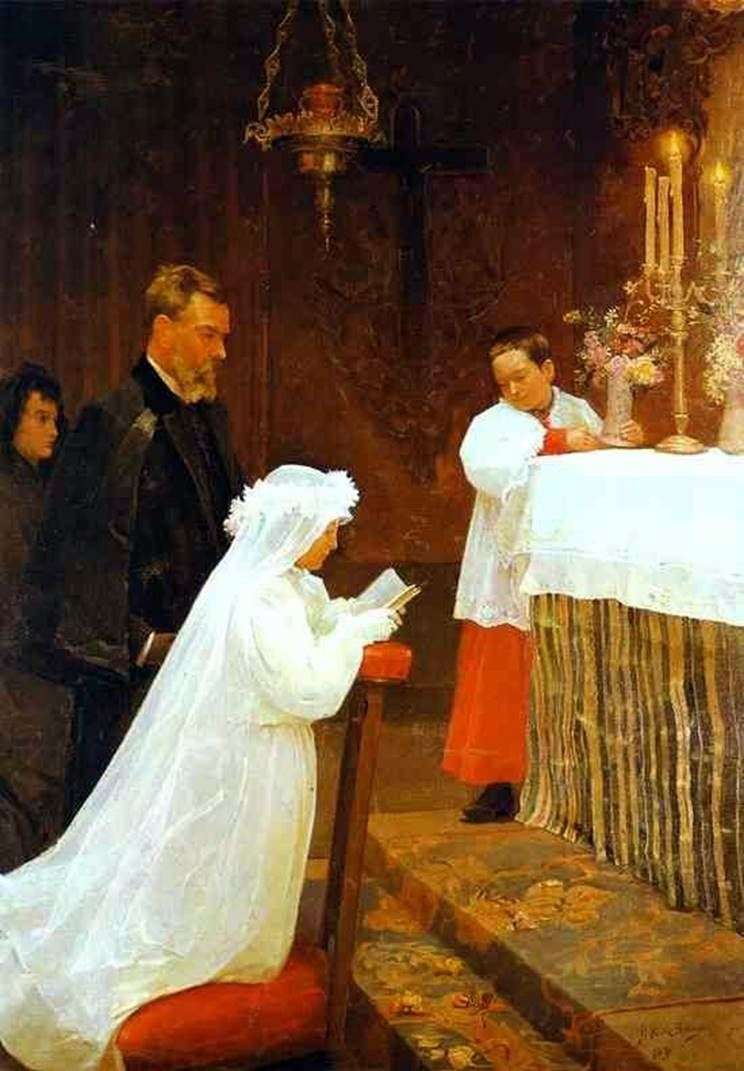
The painting “First Communion” was created by 15-year-old Picasso on the advice of his father for the Exhibition of Fine Arts in Barcelona in 1896. At this time, Pablo studied at the La Lonja School of Fine Arts. One of his teachers, Garnelo Alda, a highly successful Spanish artist, specialized in painting “high” academic historical genre, which included the creation of paintings and religious and mythological subjects.
In his workshop were collected many necessary for such work items: church robes, chalices, candlesticks, a kind of “scenery”, imitating the altar, church porch. Since Garnelo Alda was a colleague of Don José Ruiz, the young artist was allowed to use this studio.
The picture was not awarded a prize at the exhibition, no one bought it, but nevertheless Pablo received an order from a convent in Barcelona for several paintings of religious content. Unfortunately, these works were killed during the anti-militarist and anticlerical uprising in Catalonia in July 1909.
During this period, about 50 churches and monasteries were burned, including the monastery where Picasso’s paintings were kept. Picasso was never a devout, religious man. Nevertheless, in his student drawings of 1895-1896 there are quite a few scenes from the life of Jesus, the Annunciation, many images of saints – St. Sebastian, sv. Peter, sv. Anthony of Padua.
Such an active and ambitious young artist could not but be interested in the means of expressiveness and iconographic schemes used by the great masters of the past: this kind of “food” for his personal creative growth, being digested almost beyond recognition, gradually formed Picasso’s artistic personality. Many years later, the author of many articles and books about the master Pierre Dax, who knew Picasso for more than a quarter of a century, asked him if he was sorry that he had painted pictures like the “First Communion”. And Picasso answered him: “Do not be mistaken, for me then it was very important.”
 Première communion – Pablo Picasso
Première communion – Pablo Picasso Primera Comunión – Pablo Picasso
Primera Comunión – Pablo Picasso Violin by Pablo Picasso
Violin by Pablo Picasso I, Picasso by Pablo Picasso
I, Picasso by Pablo Picasso Nude Green Leaves and Bust by Pablo Picasso
Nude Green Leaves and Bust by Pablo Picasso Boy with a pipe by Pablo Picasso
Boy with a pipe by Pablo Picasso The Soler Family by Pablo Picasso
The Soler Family by Pablo Picasso Breakfast of the Blind by Pablo Picasso
Breakfast of the Blind by Pablo Picasso